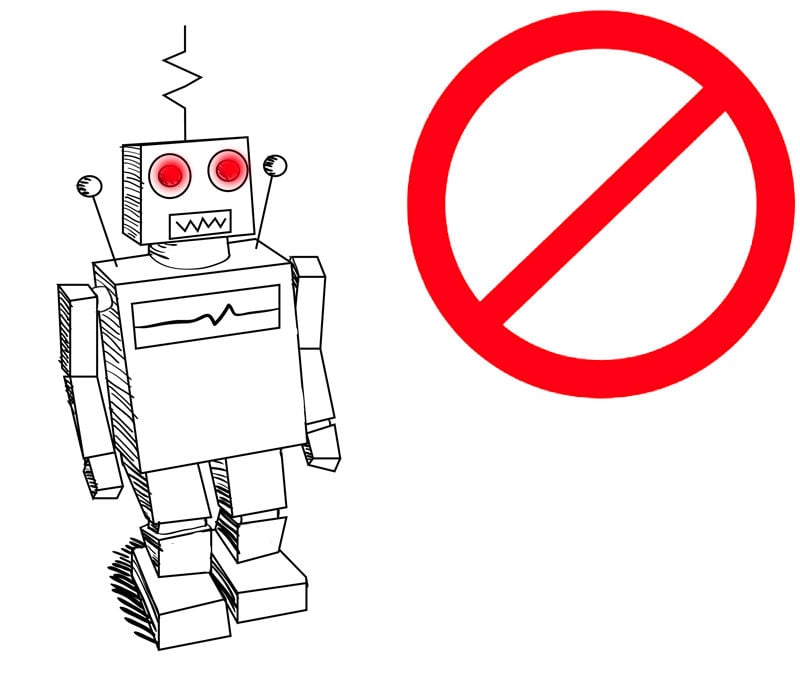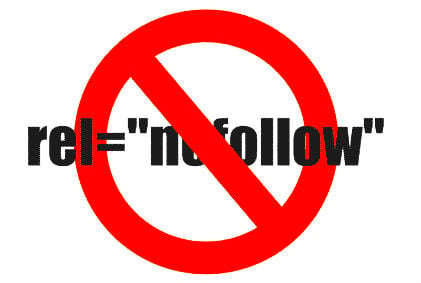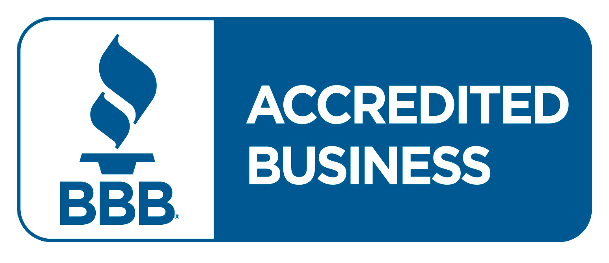DIY SEO: Nofollow Links

The subject of nofollow linking is still at the height of its popularity, because businesses of all types are heading towards revealing the whole potential of their websites to demanding search engines. Unlike rel=”follow” attribute, which makes the link a building block of a website’s PageRank, rel=“nofollow” attribute deprives it of its rank juice in order to prevent the link from being used by other users for their own profit. Although follow links are widely considered an important factor for one’s website ranking, their link juice can be easily used in any unpleasant link scheming practices thus turning the website into an unreliable source.
Some people would say that nofollow links have no actual value in terms of its search engine influence, so it’s senseless to use them. It may be true for paid links on your website, but what about other types of links? In this article we touch upon all the pros and cons of nofollow linking and define the key factors for (not) using them on your particular website. Note that the following tactics can be implemented within our favorite ecommerce platform, so this article may be considered as the Magento nofollow links SEO guide that can be used for both Magento 2 and 1.

Table of contents
- 1 What is nofollow tag about and how did it become important?
- 2 How does nofollow linking actually work and why is it important?
- 3 How to add rel=”nofollow” attribute to a link?
- 4 When should you NOT use nofollow links?
- 5 Where should you really use nofollow links?
- 6 How to make your nofollow links work for you?
What is nofollow tag about and how did it become important?
Basically, Rel=”nofollow” tag means that a given link has no support to the page it links to and also has no commercial relation to it. Correspondingly, such a link will not transfer its ranking value to the target website. This attribute was originally introduced as a cooperative result of three giants – Google, Microsoft, and Yahoo – in 2005. It’s also an official element in HTML4 and HTML5 specs.
It was created as a logical consequence of abusive spamming activity spread all over the web due to the fast growth of online blogging sphere. With the discovery of links’ ranking value, people started using them to inflate their website’s PageRank. So nofollow attribute became an effective solution against spammy comments in blogs. However, it does not completely prevent spammy activity due to the occasional negligence of website owners and invention of spam-bots doing the job automatically.
At some point, there was also a certain issue with paid links that give additional ranking value to commercial websites. Originally, there was no prohibition on using those, but after the Nofollow release many website owners required Google to give their official instructions that would help to solve uncertainty. As a result, the company announced that it was allowed to use paid links but only if they had nofollow attribute attached to them. But if, for some reason, a paid link is left as dofollow, it becomes a potential indicator of scheming activity on the site, and it may eventually impact its reputation.
Apart from paid links, nofollow attribute is also recommended to be used on websites having a lot of user-generated content.
How does nofollow linking actually work and why is it important?
While you may have got used to using dofollow links for adding value to your E-Commerce website, you understand that this type of linking is mostly good for those pages that bear the most relevant content for both visitors and search engines. It is obvious that not all on-site pages are equally important, so adding rel=”nofollow” attribute to those less important is quite a habitual practice.
An interesting thing about nofollow linking, however, is that there are some popular websites which only consist of nofollow links. These are, for instance, Twitter, Wikipedia and YouTube. Exclusive nofollow linking is primarily done to prevent the sites from potential spamdexing which is done to artificially build backlinks to abusers’ websites. You may ask then why these websites still have such a high PageRank if all of their links have rel=”nofollow” attribute. This is all due to the complexity of Google’s algorithms that have more than one factor considered for weighing the relevance of a particular page. Among such factors there are:
- traffic number;
- total amount of outbound links;
- relevance of outbound links;
- relevance of the website’s content itself.
As a result, we may say that nofollow links don’t necessarily have to be irrelevant. Moreover, they still do count by search engines as links. The idea is that the more popular a website is, the less follow links it should have in order to preserve its original authority.
But why should we care so much about external nofollow links if we deal with E-Commerce websites, especially new ones?
- They can add up to your website’s content. All of the outbound links you include to your website have certain relevance for your rankings. And although there can be a few less authoritative sources, it doesn’t mean they are useless for your audience. Yes, nofollow links cannot be crawled by search engine bots, but they can help you:
- support your argument;
- provide useful recommendations;
- share the content you like.
Thus, nofollow links are in fact awareness-building elements which can at the same time inspire, educate, and entertain.
-
They can boost your profit. However strange it may sound, you can have profit from dealing with nofollow links. As an E-Commerce business, you might be interested in various marketing services on the web that help people improve their online presence. So it is likely that onсe you will stumble upon one of those companies’ links to find the best option for your business. Because their products and services are aimed at improving your website’s performance and because YOU are their potential customer, you can build a double-sided connection with them by mutual interaction and cooperation. So when you buy such company’s services you at the same time work on driving more traffic and sales to your business. On the other hand, the company you choose for your marketing campaign will get profit from having you as a customer and as a referral at the same time.
Thus, a nofollow link can lead to engagement and mutual profit.
-
They can multiply in quantity through social interaction. As you know, social networks, such as Twitter, allow duplicating website content by using nofollow linking by default. However, they can also attract more attention and boost awareness throughout the web. It’s very likely that one of your blogposts is going to be noticed by other people engaged in the same kind of business or activity, which will lead to reposts or retweets with the aim of sharing liked information. Then this chain can get even longer and one day you will find an article dedicated to a deeper exploration of the content presented in your original article, which makes it another nofollow link to your website. This chain, once triggered, can continue for as long as the Internet exists thus leading to numerous nofollow links and constantly growing awareness.
But if you think that such things are too unreal to happen to your own website, you are mistaken. The important thing to remember is that you will only get noticed if you provide a high quality content that is relevant and interesting to your visitors. The right place and the right time also matter, but without content your chances will inevitably reduce to zero.
How to add rel=”nofollow” attribute to a link?

Pretty easy. Let’s assume your link looks like this:
|
1 |
<a href="http://www.shoutmeloud.com">Page Name</a> |
When you make it a nofollow link, it will change its look to the following:
|
1 |
<a href="http://www.shoutmeloud.com" rel="nofollow">Page Name</a> |
You can apply this attribute both manually and automatically with the help of specialized plugins that can add nofollow value to all of your links, all external ones, or to those belonging to a particular category on your website.
When should you NOT use nofollow links?
Some people once tended to use nofollow links to emphasize the importance of their relevant pages which transfer valuable link juice from other reliable websites. However, this technique was soon to become regarded as a scheming one. In 2009, Google changed their ranking algorithms, which made it no more effective for webmasters to influence their websites’ PageRank with inflated nofollow links. Specifically, the whole PageRank started to be counted as the divided value of all outgoing URLs regardless of their attribute. So if you decide to look for other ways of boosting the value of your follow links, you might want to use alternative techniques, such as those based on JavaScript and Flash.
Where should you really use nofollow links?
It may sound odd, but nofollow links can really become an important part of your search engine optimization strategy. So knowing where exactly to use them will add up to your website’s authority.
Apply rel=”nofollow” attribute to the following links:
1. Outbound links to trust-oriented websites, such as ScanAlert, Verisign, and BBB (Better Business Bureau)

The majority of such websites are really popular among E-Commerce businesses because they largely contribute to their own websites’ trustworthiness. It is therefore a must to buy and integrate their services into your website if you have sufficient budget to afford it. However, when linking to those services, you should make sure the URLs are left nofollow because they tend to take away your link juice in their favor. Not only that: these websites usually have enormous PageRank and millions of backlinks constantly feeding it, so you don’t really want to give away your hardly acquired rankings to pretty much successful businesses.
2. Outbound links to Feedburner RSS feed

In case if you have them, such links should be not followed by search engine crawlers for several reasons. First, although FeedBurner is totally in Google’s realm, it often takes too much link juice for itself rather than a website linking to it. Due to the same reason, FeedBurner blog feeds are often found higher in the search results list than original blog posts themselves. This makes it less attractive for website owners claiming for their right to get ranked higher in SERPs. Furthermore, because FeedBurner specializes in providing RSS feeds, it will lead to your website’s content being duplicated and thus losing its relevance.
These may also impact your own rankings, especially when you refer to marketing or link building websites. Even though you might use them exclusively for your blog, search engines can think that you’re inflating your website with backlinks to cheat on the system. It is advisable then to make those links nofollow to prevent any negative outcomes.
By the way, instead of referring to doubtful sources, you can link more to your competitors’ websites – it will not only ensure your own reliability but it will also improve the quality of your on-page content.
4. Internal links
Internal linking can be regarded as a necessary practice which aims to provide the user with all the necessary information within the distance of a single click. However, not all of the website’s pages are equally important for a potential visitor. For instance, Login page or Privacy Policy page are less likely to be visited, while About or Contact page usually contain relevant information filled with business-specific keywords and phrases. Because the first two types of pages are irrelevant for your PageRank, they can bear a nofollow tag.
Note that if you have a FAQ page, you should make it a follow link, because it usually has lots of internal URLs to help users get along with your website.
5. Repetitive internal links
Sometimes you might need to include the same internal link to one page several times. Let’s say you have a FAQ page where you explain where to find a particular category and a few questions later describe how to manage a purchase by choosing a product from a particular category. The first link to a category page can be set as dofollow, but all the repetitions of it on the same page are recommended to get rel=”nofollow” attribute. The main reason for doing it is that if you allow search engines to crawl all the URL duplicates placed on one page, this may be considered as an attempt to artificially boost the internal PageRank of your website, which usually violates Google’s terms and conditions.
How to make your nofollow links work for you?
Regardless of how good your nofollow links are, you will need to apply some additional techniques to make them effective for your website. Here are some of them:
- Encourage your visitors to click on a link. This should be done with care in order to intrigue (not irritate) a potential user. Smart language use, topic-related images or gifs, proper place on the page – all this can largely attract people’s attention.
- Boost your audience. If you want to get more clicks from nofollow links, think of attracting more visitors to your site. By using a set of basic SEO marketing techniques, you can sufficiently increase the number of active users on your website in a short period of time. These include:
- e-mail marketing strategy (sending personalized messages to users in which you kindly ask to check out the latest content of your website);
- social referencing (mentioning other popular companies or individuals in your posts in order to make them share it with their own subscribers, thus transferring a part of their audience to you).
- Make the links relevant. It all starts with a link itself. Its name should in some way be interesting and up-to-date so that users decided to spend their precious time on reading what’s inside.
- Provide your links’ content with relevant information. Because nofollow links can only work with real users, you will have to think of what might be of interest to your audience in the first place. Making them click on the link is one thing, but making them stay on the page requires more efforts to put.
- Improve your landing page. Specifically, make sure that users can stay longer on your page after reading its content. Including related materials at the bottom of the page is one way to do that. You can also provide the page with a comment section where users can express their opinion on the post.
- Don’t insist on getting a follow link from people who mention you on their website, perhaps you should first gain more relevance to become worthy of it.
And again, remember that nofollow links are not that bad, so use them wisely and you will eventually be rewarded.









